In January, I had the chance to check out a very new yarn company, mYak, at Vogue Knitting Live. I even picked up my first skein of yak yarn at their booth! Paola, one of the co-owners, had some time to meet up with me back in February at Le Pain Quotidien for an interview.
mYak is small company that works with cooperatives in Tibet and Italy to produce wonderful products from yak fiber. Recently, they added a yarn line. You can find out more about mYak on their website, Facebook page, or Twitter account.
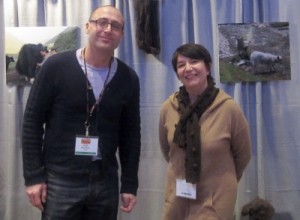
Underground Crafter (UC): How did you get involved with mYak?
Paola: I’ve been working on the Tibetan plateau, in Tibetan areas, for the last 13 years of my life. I’ve always been interested in Tibetan culture. I worked a lot with a non-profit organization working on development activities and a development project and that brought me to live in Tibet for many years.
I lived in Llasa for about 6 years. With the project that I was involved with, I came in contact with nomadic culture. I did a lot of activities there within different contexts – educational and work development – and really fell in love with the nomadic way of life, the traditional way of life. I could see how it slowly was on the verge of extinction because of what was happening there, and with the resettlement – the government wants them to resettle, the nomads want to stay on the grasslands to be with the animals.
So we were trying to find a way to give them an income for something they believed in, to maintain their culture, to maintain their traditional way of life, but to be able to send their children to school, to be able to pay for health care, and to have some spare money for whatever necessities they had. And what they have is really the yaks. The yak is their wealth, it is their treasure. From the milk, to the meat, to the hair, the fiber. So we started looking at the yak fiber.
There’s a lot of yak fiber on the market, but it’s a bit coarse, it’s a bit rough. Slowly because I spent so many summers with the nomads in their tents, I just fell in love with the yaks. And I saw that the little yaks, by touching them, they were softer.
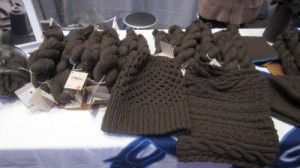
UC: The baby yaks?
Paola: The baby yaks. After two years, I went with someone who became a friend of mine, Andrea, who is an Italian veterinarian and a fiber expert. So we were looking at the animals, we were taking care of the animals, we were doing some veterinary training for the nomads.
We took some samples of this fiber and we had it analyzed in Italy, where we are both from. We slowly realized that the actual undercoat of the baby yak was very, very soft. Basically, we felt it was softer and we wondered whether we could do something from it. We also realized the nomads were selling this wool at a very cheap price to these middlemen.
UC: Do they use the wool themselves?
Paola: They have much more than they can use.
They were really getting hardly anything. There were middlemen and middlemen and middlemen. It was a long chain, and they said it’s not worth it for us almost to even collect this fiber.
But then when we looked at it, and we looked at the quality, to us it was not just a natural fiber, but a precious fiber, too. Looking at it under a microscope, it had so many similarities, in terms of microns and everything else, it’s very similar to cashmere. So we said, ok, let’s try and do something. Of course, because it’s shorter, we wanted to see the resistance. We did a lot of tests. It took almost two years, back and forth, to think about it.
Then we said, it’s a cool fiber, it’s fun, it’s natural. So what can we do? We came up with the idea of why don’t we form a cooperative of nomads, in Tibet, we buy the fiber from them, then we form a cooperative in Italy, we export it. There are some companies that do some things in Tibet, but we really wanted to use the traditional fibers with artisanal quality. So we searched long in Italy to find where we could produce the things. We wanted to find a company or companies that had the same ethics, the same methods, and the same interest in the environment, so we selected a couple of these companies. They recycle the water, for example.
We started to make a few samples. The first samples we made were accessories to keep it simple because we didn’t want to think about sizing. So we started doing some scarfs, and some home decor, some blankets. Then we came up with the name, we came up with the branding, and we started working that way. And that is really how it all started.
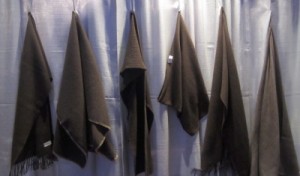
UC: At that point, how was the fiber getting to Italy? Was it already spun?
Paola: We tried to do as much as we could in Tibetan areas, in the Tibetan plateau, so one of us is there at the selection process. We take it to a de-hairing factory, we wash it and we de-hair it to get the coarse fibers out of the way, then we ship it to Italy.
UC: So the spinning is done in Italy.
Paola: Yes, that is really what makes mYak different from the other types of yak yarn. Because of the artisanal spinning, they can spin it much thinner than other people can do. And then we started doing it much thicker. The thick style was for accessories that were machine knit. And when I started looking at it, when we started making a little thicker fiber for some of the thicker accessories, I took a ball home and I said, “Boy, I wonder what I can knit with it.”
So I start trying to make things. I’m not a great knitter, I’m a very basic knitter, but I tried to do something. I did a little scarf. I showed it to some friends and they said, “Can we get some yarn? Can we knit with this?” and they seemed quite interested.
We launched mYak in 2011, so it’s very, very young, and then I started talking to people in the U.S., and they all said, “Why don’t you try to approach the people at Vogue? They have this Vogue Knitting event.” At the time, I didn’t have any yarn. I talked to them, and they were super nice, and they were really helpful, and they said, “Send us some samples.” So we did. We took some of the fiber, we spun it into yarn, and I got it to Vogue Knitting. I got the yarn from Italy three days before the Vogue Knitting event.
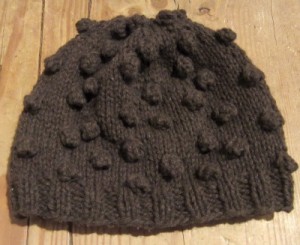
UC: A little stressful!
Paola: I was literally designing the labels and trying to understand how it worked. That’s why Vogue Knitting was great. We had such great reaction from people – we had mixed reaction, to be honest. I think people loved it, but people were saying, “Ok, but what are the colors?”
UC: I think that’s one of the interesting things when you have an undyed, natural fiber, because some people come to the yarn like this is the natural state and other people are like where are the stripes?
Paola: Yes, and we have chosen to maintain the natural colors, not to have chemical dyes. Can we afford to keep that forever, I don’t know. We tried to use natural dyes, but [the yak] is so dark.
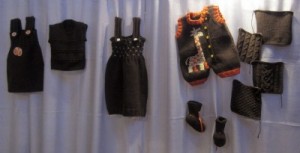
UC: It must be very hard to get it light enough to dye it in a natural way.
Paola: The good news is that the yaks come in different shades, so they have the dark brown, they have a grey, a light brown, and a white. So what we did, we went back to our cooperative in Tibet, and we said, “Can you collect a little bit of the lighter grey and the white.”
UC: So at least you can have two or three colors.
Paola: Exactly, and if we were to naturally dye the white, it’s much easier. So we are looking into that at this point. (UC comment: Since the time of this interview, mYak has added burgundy and several other natural/undyed colors to its yarn line.)
UC: People are accustomed to this huge range of colors, and not everyone is accustomed to working with undyed yarns, so I’m sure that can be a challenge. Where do envision the yarn part of mYak going at this point? Are you trying to sell direct to consumers, wholesale to retailers, or are you still thinking about it?
Paola: We are at the stage of figuring it out. Vogue Knitting Live was the platform for me to understand that there is a future. I love it, but me and my family loving it was not enough. And our friends, because we have our mothers and friends knitting for us. We’ve paired with a very nice US based designer. But then at Vogue Knitting, people asked, “Where can I buy it?” So we saw that there is a future, there is potential.
What I’m trying to do is understand more about the market, who are our competitors.
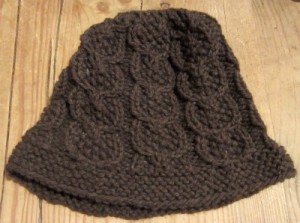
UC: I think the cooperative piece is a big distinction. Other companies who sell yak yarn don’t have a cooperative.
Paola: Yes. Then I need to understand what is the best way to contact or approach yarn shops in the US and also internationally to see if they are interested. I get different input from people. Some people are telling me I should just try and call them, but I don’t have any associates – my family’s in Italy and I’m here.
UC: Have you guys thought about TNNA?
Paola: And the second option is TNNA. I’m trying to understand whether with my little brown color, is it worth it for me to go there? That’s something I’m trying to understand, too. (UC comment: mYak did end up exhibiting at TNNA‘s summer show in Columbus, and their yarns will soon be distributed in several yarn shops throughout the United States.)
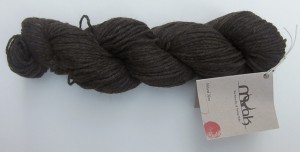
UC: I definitely think your perspective is really unique. I feel like there are people who would be more interested in the yarn because of it. Have you thought about men’s related designs at all? It seems to me that the brown is a natural fit with men’s designs.
Paola: Yes, we have, in fact, some of the patterns that we have developed are for men. We have a reversible hat and some of the scarves are more unisex. It was interesting at Vogue Knitting because we had a few men that purchased the yarn themselves because they were knitters, and then a few men who came and liked the yarn, and then they dragged their wives back and said, “I’m buying the yarn because I want this made (for me).” It was really nice.
I’m also debating about whether to put it on our website or not. It would be difficult to ship from Italy, but because I have the yarn here in NY, I was thinking about opening an Etsy shop, and trying to understand more about Ravelry.
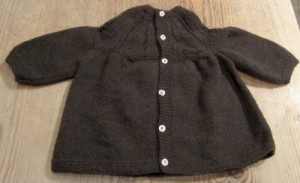
UC: Are you going to have a social media presence?
Paola: We do. We have a Facebook page and a Twitter, too. I hope to be more active definitely. I was just sort of waiting to understand more about the yarn, to reach out to people, get a mailing list collected, and let people know where we are.
UC: Do you sell the accessories directly on your website?
Paola: Yes. The prices are in Euros.
I think what is very interesting is how we are following the entire chain from the production to the end user, which is very short. There’s the yak, the nomad, then we come in and we bring it out and we spin it.
We are also planning to prepare bags for spinners because a lot of people have asked me that so we are thinking about the roving.
UC: When you are in Italy, are you working with many mills, or one mill?
Paola: Right now, we’re working with one mill.
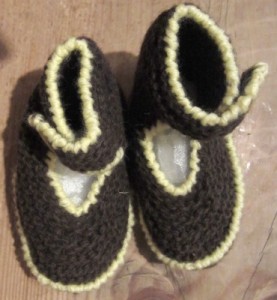
UC: So you really have a hand in every aspect of the production.
Paola: Yes, we actually physically take it there and then to whoever does the machine knit, because the machine takes time and we have a couple of them. One does the scarves, one does the blankets, and the clothes based on what their expertise is.
And we’re also trying to work with small, family-run companies, which means we can give them a job because the economy in Italy is so bad. We have the Italian element of the company and we want to maintain that.
It would be much cheaper to have it made in China. A lot of the yak yarn is made in China, and unfortunately the main one sold in the US is made in China. When we say 100% baby yak, we know, and there’s no filler, there’s nothing in there.
I’m trying to develop a baby line. Some of the things that Tom Scott, the designer, developed for us were these little baby hats. We have a set with blankets and baby hats. And I want to be comfortable in saying to a mother, if you make these for your child, it’s warm, it’s natural, it’s hypoallergenic. If I were to have a child, that’s what I would do myself.
The next thing I want to do is take knitting classes because my knitting is so basic. A friend of mine just made these.
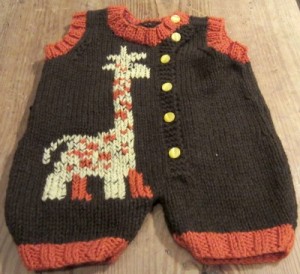
UC: That is so cute! Do you hear people saying they don’t want to handwash, especially items for baby?
Paola: Actually people ask. This is other yarn, combined with our laceweight. Yes, but actually all the things that I knit and the textiles, I did put them in the machine. I did wash put it in a pillow case, and I did wash it on cold, on handwash.
UC: So you’ve had good success machine washing. The nice thing about brown is that goes with so many colors.
Paola: And also it can be for a boy and a girl, a woman and a man, there really is no distinction.
One of the great things about the brown [yak fiber] is that it’s one of the warmer ones. It’s actually warmer than cashmere. Some of the accessories that we have are so thin, like the stole, that you can wear them in the summer, too. They’re very breathable and especially in the air conditioning. I use it in the plane.
Thanks, Paola, for stopping by to tell us more about mYak and your yarn production!

2 thoughts on “Interview with Paola from mYak”